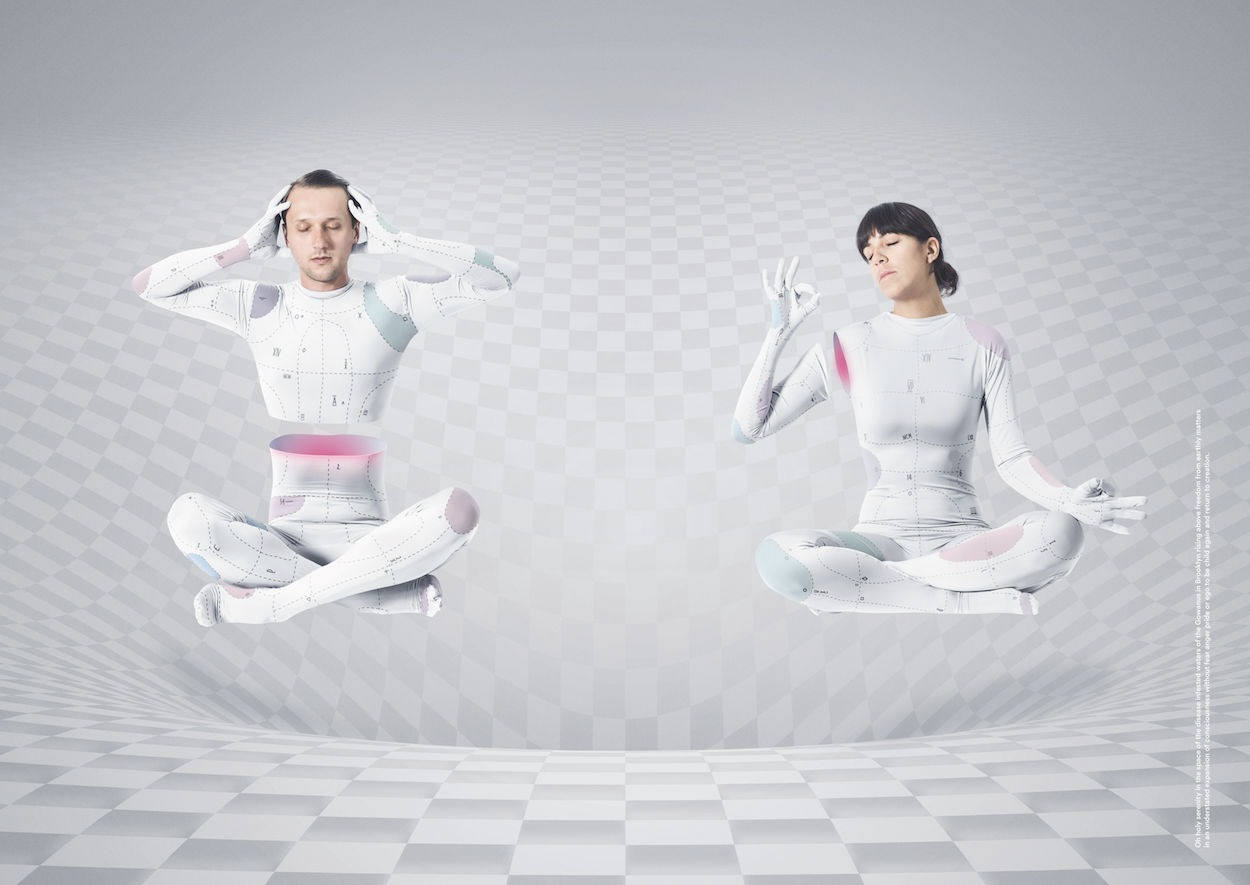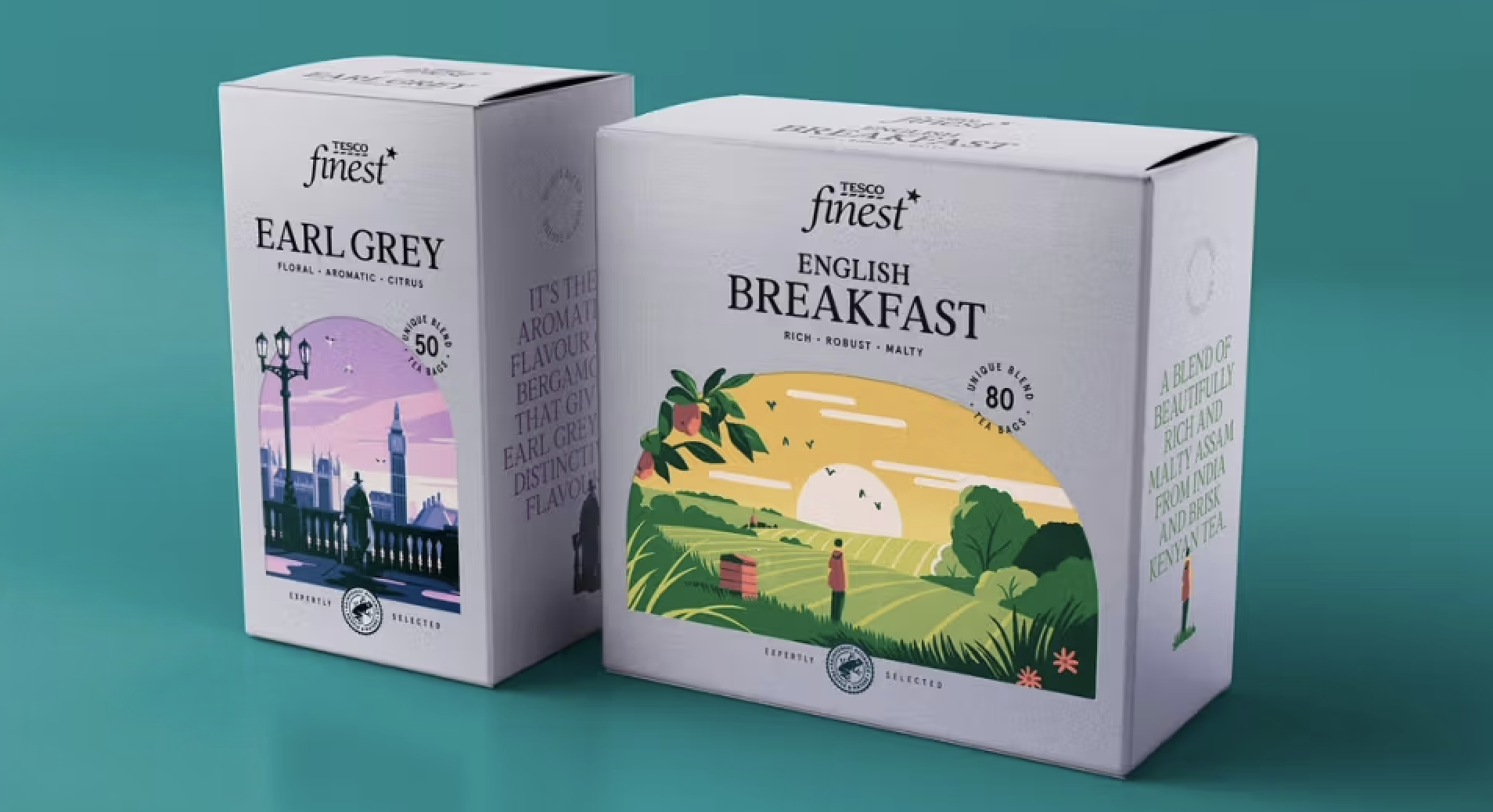Interview: Anton & Irene
The Brooklyn-based duo on why they went from agency bigwigs to hands-on designers.
Anton & Irene will be at Generate London on 20-22 September, where they will share their experience on how to successfully have a good work/life balance while producing creative work for both.
Anton Repponen and Irene Pereyra first met while working as agency directors at Fantasy. Soon, it became clear they weren’t doing as much design work as they’d like, so in 2014 they took the plunge and founded Anton & Irene. The studio immediately started making waves in the industry, snagging Karim Rashid as its first client and picking up net’s New Agency of the Year award (watch their awesome acceptance video). We chatted to the duo about their extraordinary pitching success rate, and why there’s really no need for user research.

You went from being agency directors to designers. Why the move?
AR: We became directors quite quickly at the very beginning of our careers, and it was definitely not something we had planned on. After a couple of years ‘on the job’ we realised the things we enjoyed doing most were the things that had nothing to do with being directors.
There are a lot of things that start to eat up your time, like the performance reviews of your designers, and discussions about finances and business strategies, and you end up doing less and less actual design work.
IP: We definitely learned a lot from all of these extra-curricular director activities, but we wanted to make sure we kept designing and didn’t become the kind of directors that just point at other people to do stuff. That works really well for some people, of course, but for us it was like dying a slow death.
We like making things. We like working on stuff ourselves, and the only way to keep doing that was to start our own studio. At larger agencies you get promoted away from the things you are best at, but as an independent design studio, we could ensure we would always be the primary designers.

What was your experience like when you launched Anton & Irene?
AR: We were very lucky that it was quite easy. By the time we started our studio we were already known as designers and were associated with some pretty successful projects. We’ve worked with a ton of people over the past seven years at companies like Google and Microsoft, and a lot of designers who worked for us in the past are now at places like Apple, Spotify and Facebook. Our network is quite large – it wasn’t like we just came out of nowhere. If we had started our own agency earlier, we would have had a very different experience I think. It was good timing.
Daily design news, reviews, how-tos and more, as picked by the editors.
What advice would you give to others setting up an agency?
IP: You have to be very sure about who you go into business with, because at the end of the day, a business is basically the same as a marriage. It’s very important to be aligned on very many different levels because there is a high chance for irritations to build up if you aren’t.
Anton and I both have a similar outlook about to what extent we will let money make decisions for us (as little as possible), how many hours we want to work (from 9am to 6pm every day, and never on the weekends), and what kinds of work we want to take on (interesting work that will challenge our skillsets). You might think that these things go without saying, but you’d be surprised by how often that can go wrong.
Can you tell us about your process working with Karim Rashid?
IP: Believe it or not, the Karim Rashid project was quite possibly the easiest one in our careers. Initially we were actually quite apprehensive about taking on the project, since we thought it would be impossible to design for a designer. Especially for one as prolific and influential as Karim Rashid. We were worried that he would end up ‘directing’ the project, which would have been a total nightmare.
The only reason we decided to move forward with the project was because we had worked with Alexander Wang on the redesign of Balenciaga.com the year before, and he respected our expertise as digital designers and never crossed into our domain. As soon as we met with Karim and his team we knew it was going to be a good working relationship. We liked them right away.
You’ve said that you ‘don’t do user research’. Is this still the case?
IP: Yes, that’s true. It’s just not part of our process. Although we sometimes get vilified by other UX designers for not doing it, we refuse to do research just because other people feel that it’s something you have to do. Everyone has their own way of coming to a solution, and user research is just one way.
Does this ever cause difficulties with your clients?
IP: It’s actually never affected any of our pitches or work with clients, and very rarely have clients insisted on user research. In those cases we asked them to hire an outside company to conduct the user research, and then together with the client we’d decide on what we wanted to action from it. Though in reality nothing surprising ever came out of it. It’s funny how dogmatic the UX field has become, with so many rules on process and things. I really dislike that.
How important is UX to you? What makes a good user experience?
IP: Wow, this is a massive topic we could discuss for hours. A good user experience is everything, of course. Everything. You want things to make sense and to be designed around the person who will be using it. However, I do find it interesting how so many things have become boring and visually uninteresting under the flag of ‘good user experience’. Maybe it’s OK for some products to be hard to use, or difficult to figure out. Maybe your mom shouldn’t always be able to use it. Think of Snapchat.
Good UX still means many different things to many different people, and even people within the UX community are still arguing about UX versus UI and what it all means. I find these discussions kind of uninteresting to be very honest. Stuff is either good or it’s not. You can call it whatever you want and get there with whichever means you need to.
Can you tell us about some work which initially didn’t go down well with the client, and how you bounced back?
IP: When we were working on the redesign of USAToday.com back in 2012, we almost got fired when the client didn’t like the creative work that came out of the three-month discovery phase. They basically threatened to fire us if we didn’t come up with something better by Monday. It was Thursday.
We had three days to come up with a totally new and different framework, and through some sort of miracle we managed to get something that was really, really good. By the time they saw it on Monday we had won back all the respect needed to keep the job, and to maintain a good relationship with the client.
We realised our mistake was that we did not include them enough in our working process, and that they would have been able to pull the handbrake much earlier on if we had shown them stuff sooner. Ever since then, we’ve stopped doing ‘grand reveal’ presentations and show our work-in-progress almost on a daily basis. Better safe than sorry!
You state you’ve won 84 per cent of your pitches – what’s your secret?
AR: We learned by making mistakes. Every time we lost a pitch, we would request a call with the client to ask where we went wrong and why they didn’t choose us. It’s amazing what you can learn from that.
It’s important to be 100 per cent dedicated to the pitch for the entirety of the time that you are working on it. It’s also important to show the client at least two different concepts, and you should always present in person.
Most importantly, you have to sell yourself and your process. They basically have to look at your presentation and if your concept doesn’t match their needs, they should think to themselves ‘but we can work with these guys if we let them know what we’re thinking’. It’s all about building that trust and understanding right from the beginning.
How do you stay excited about design, and beat creative block?
IP: To be very honest, I am really unaware of trends and what is happening in our field currently, and I kind of like it that way. I think I am afraid that if I get too wrapped up in what is happening out there I will inadvertently start copying stuff.
The things that inspire me are kind of random. I like good stories. I like weird facts. I like stats. I like history. I like finding things that other people walk past. I like unusual people and unusual situations. I like making things make sense. I like taking a massive amount of stuff or information and sifting through it to see categories and similarities. I like fixing things that are broken. I like putting things in order. I like things to be neat and organised...
AR: I somehow stopped looking at other things that happen in digital a long time ago. Most of the books I read aren’t industry books, I read both fiction and non-fiction – that inspires me much more. If I read blogs or any other online publications they tend to be about photography, video, industrial design, art, fashion or architecture. I am trying to get inspired by other industries and borrow something from there to bring into my work. Creative block is a myth.
Anton & Irene will also run their popular Concept, Create, and Sell! workshop at Generate London, in which you'll learn how to quickly come up with a concept and solution to a client brief and create a convincing presentation that sells your idea either to your internal team or the client within just a couple of hours. Reserve your spot today and save £95 with a combined conference and workshop pass.
Generate London will feature 15 other presentation from the likes of Steve Fisher, Zell Liew, Leonie Watson, Jaime Levy and many others. Topics covered include UX strategy, performance, web animations, conversational UIs, responsive CSS components and much, much more. Don't miss it!
The article originally appeared in issue 274 of net magazine.
Related articles:

net was a leading magazine for web designers and web developers, which was published between 1994 and 2020. It covered all areas of web development, including UX and UI design, frameworks, coding and much more. Much of its content lives on in Creative Bloq. View the net archive on Creative Bloq.




